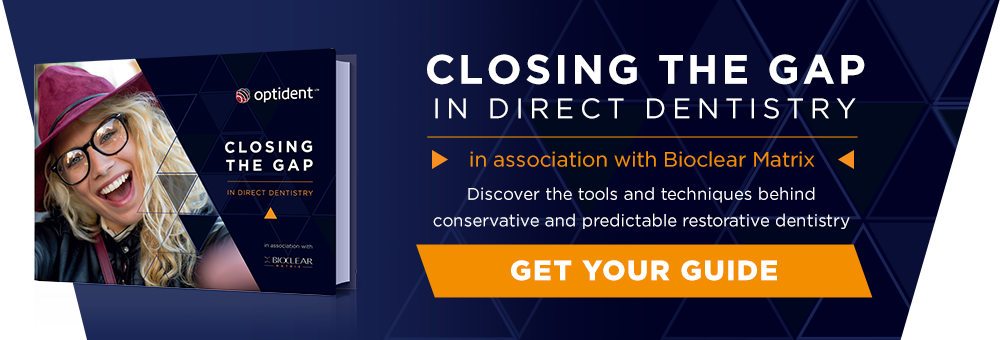Learn more about Bioclear; the innovative composite wrapping technique, perfect for treating black triangles.
How to Treat Black Triangles?
The question of how to treat open gingival embrasures, or ‘black triangles’, has largely stumped dental professionals, despite the belief that 67% of people over the age of 20 suffer from the condition.
Historically, dentists have been inclined to ignore the problem because conventional solutions are costly, invasive, unpredictable and unstable. These range from orthodontic extrusion to inter-proximal bone graft, soft-tissue graft or papilla reconstruction, and subtractive porcelain restorations or composite bonding.
Yet black triangles are not just an aesthetic concern. Patients can also suffer from functional and clinical problems, such as retention of food debris, or biofilm accumulation and potential tissue inflammation. There is also a risk of lateral compaction of food debris, creating uncomfortable wedging pressure between tightly spaced roots.
Thanks to US dentist and founder of the Academy of Microscope Enhanced Dentistry, Dr David Clark, there is an answer…
In 2009, Dr Clark invented Bioclear - a non-invasive, additive method which makes a direct restorative solution to black triangles both simple and predictable. It is very different from traditional composite bonding in both technique and results.
The following case study, treated by Dr. Jihyon Kim, showcases Bioclear’s potential in full-mouth black triangle treatment.



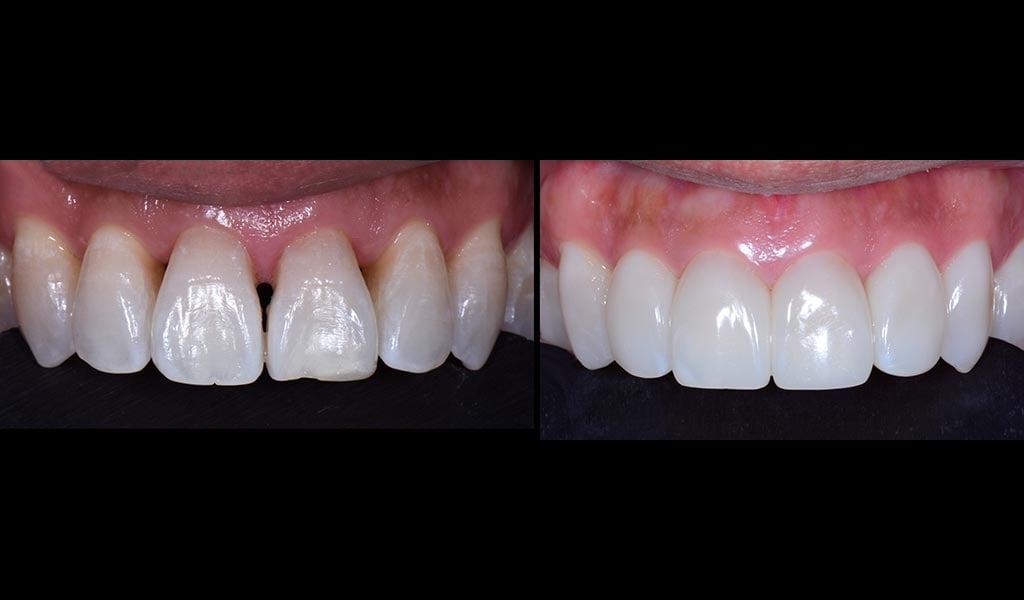


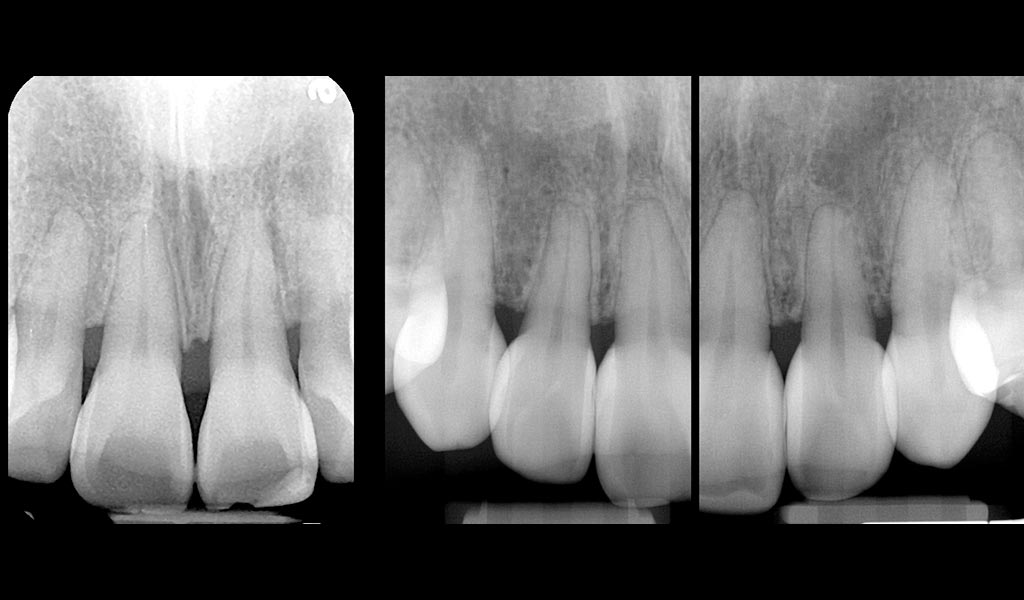
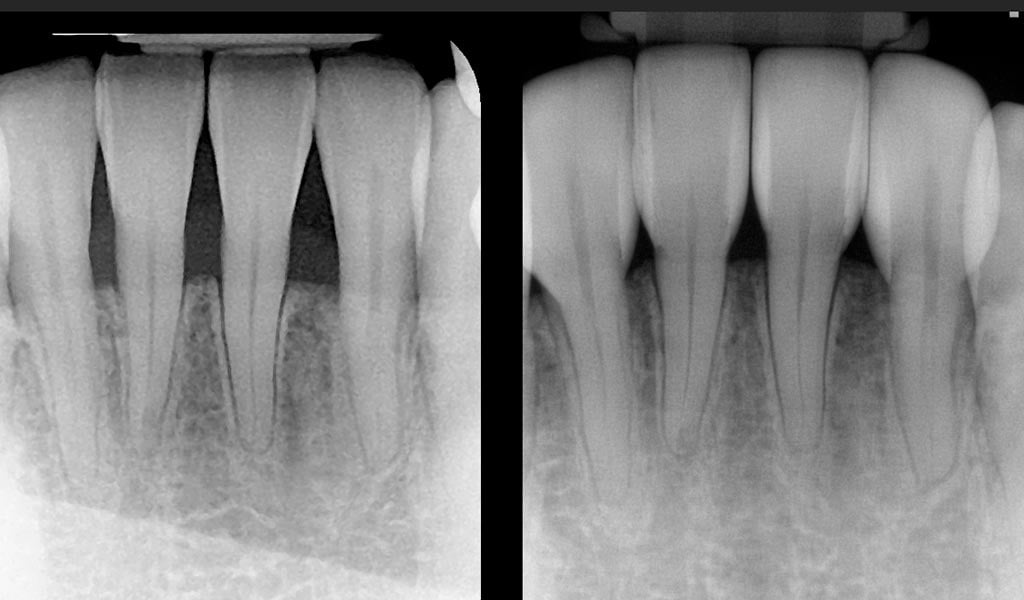




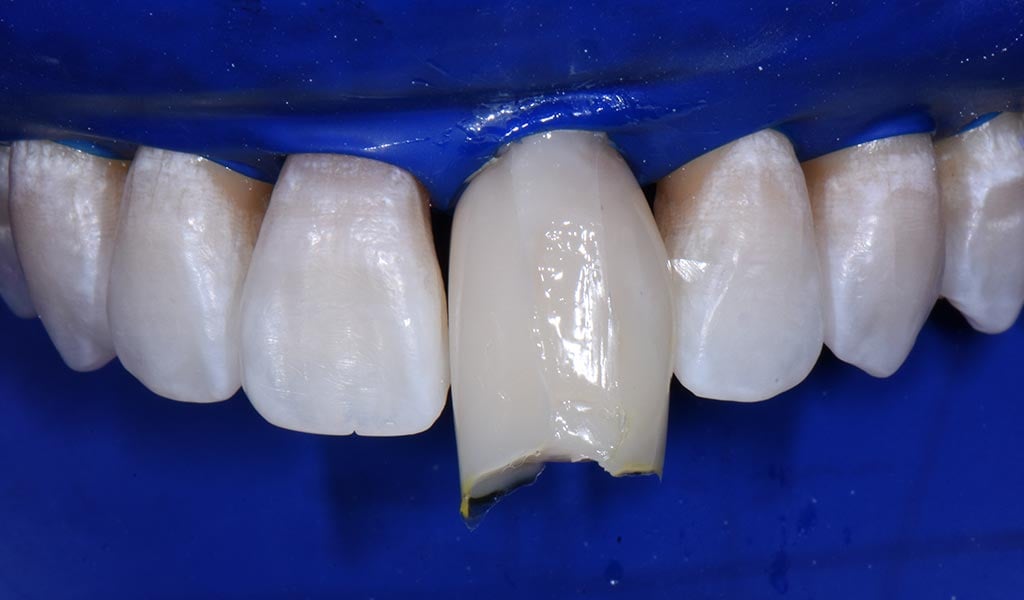
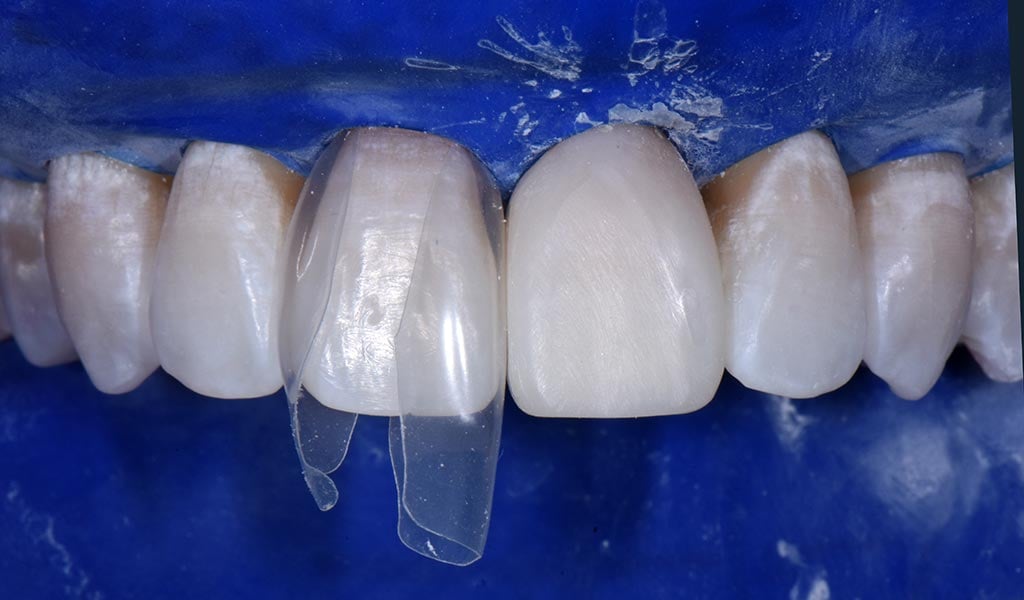
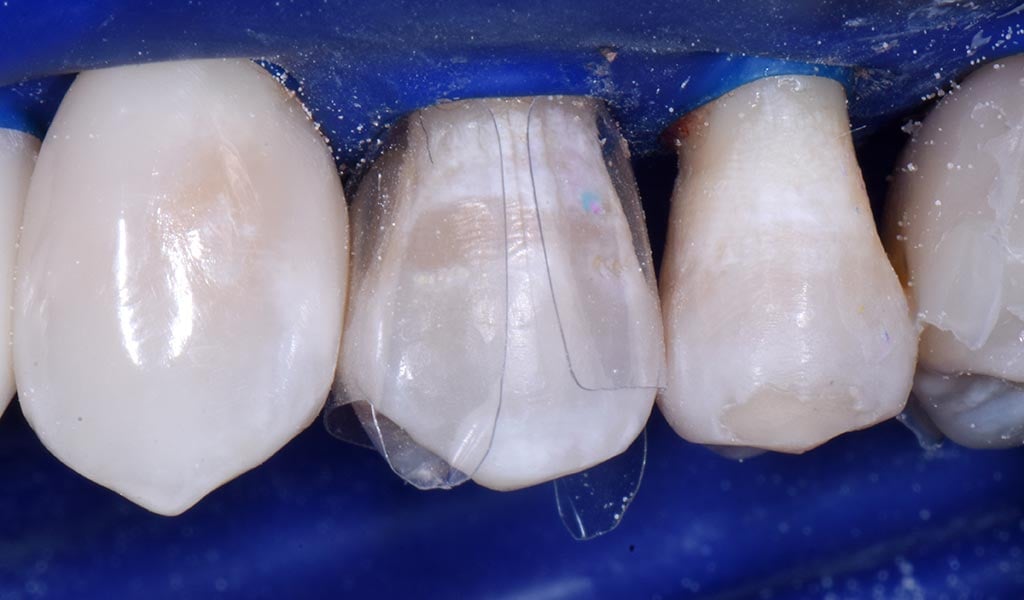
Diagnosis and treatment planning
A 40-year-old male patient (and fellow dentist) presented with minimal restorative history, stable periodontal status, and excellent home care. His chief complaint was the generalised black triangles present between all inter-proximal contacts following orthodontic treatment.
A stated secondary concern of his was the generalised mild/moderate tetracycline staining of all dentition.
The treatment goal was to minimise or eliminate the open gingival embrasures, while also minimising the amber colour gradation present in the gingival half of the anterior teeth. The only tooth preparation involved was the removal of an old incisal composite restoration on the left central incisor (tooth No. 9). The facial aspect then had to be prepped with a functional aesthetic bevel. All other treatment was completely additive.
The result was a significant improvement that satisfied the patient’s aesthetic goals.
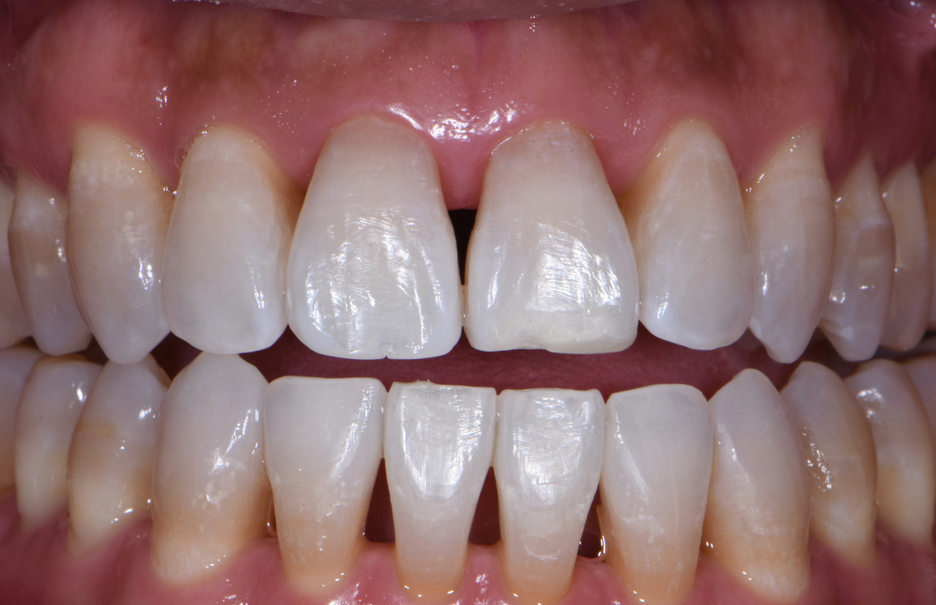
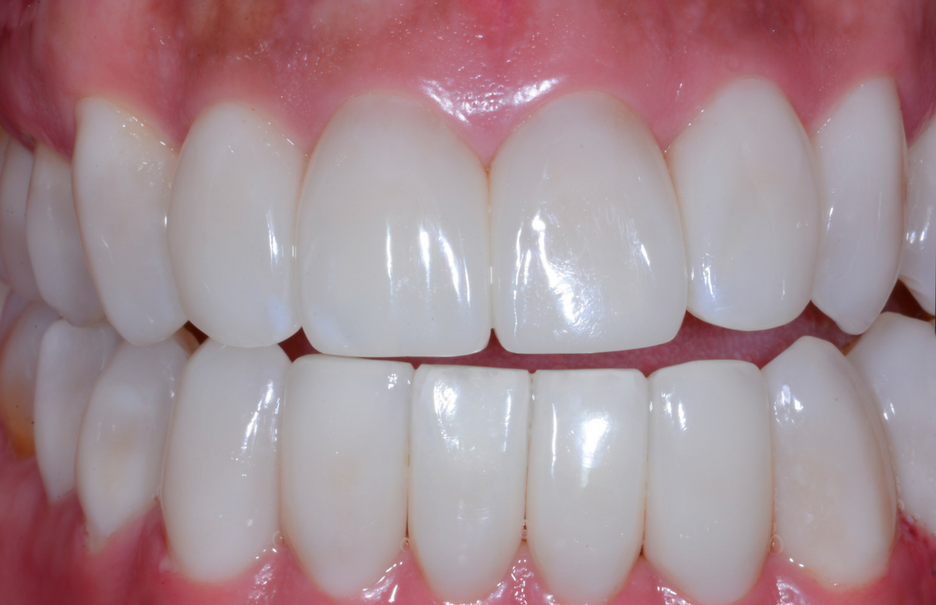
The radiographs show the smooth sub-gingival restorative contours that result in a favourable tissue response...
- The preoperative photos demonstrate an ideal width-to-height ratio of the maxillary central incisors and the aesthetic presentation of the smile.
- The tapered crown form and incisally positioned point proximal contacts are clear, contributing to the large interdental embrasure spaces.
Even if the arch form allowed for interproximal reduction and closer orthodontic positioning of roots, it would have compromised tooth proportions and smile perspective, while the black triangles would have been merely minimised rather than eliminated. In addition, the impact on Bolton ratios could potentially compromise interarch relationships.
Bioclear Clinical protocol
The Bioclear Method is simple and prescriptive.
One of the pillars of this method is biofilm removal, using rubber dam isolation (Hygenic 6”x6” Heavy Gauge Dental Dam).
Proper isolation is critical for biofilm staining with a two-tone disclosing agent, and subsequent mechanical removal with an aluminium trihydroxide spray. Rubber dam isolation is also critical for soft-tissue retraction and papilla compression.
A minimum 1.0- to 1.5-mm sub-gingival restorative contour is necessary to apply lateral compression to existing papillae. While lateral pressure helps to mould the papilla to fill any embrasure space not already filled by composite.
Other than the bevel prep on tooth No. 9, the remaining teeth were prepared for this procedure by removing the biofilm with the aluminium trihydroxide spray delivered via the Bioclear Blaster.
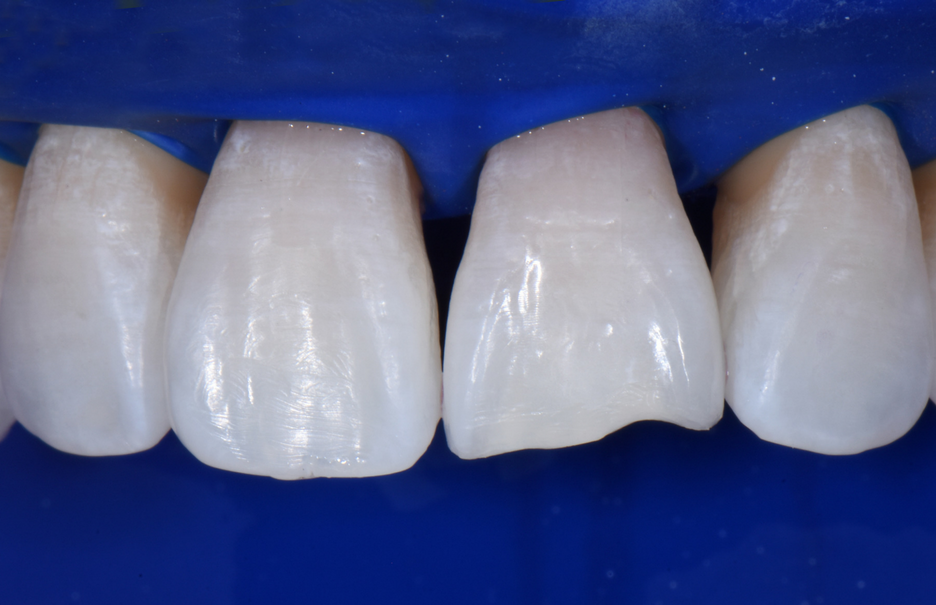
The appropriate Bioclear matrices were selected to create an anatomic ‘aquarium’, or containment. Flowable and paste composites were heated to 155°F for ideal flow in a HeatSync heater (Bioclear), then injected into the form created by the matrices.
Wedge placement is neither recommended nor necessary. The anatomic contour of the matrices, along with the rubber dam cuff around the cervical portion of the teeth, make the matrix aquarium self-sealing. It is important to note the sub-gingival extension of the matrices.
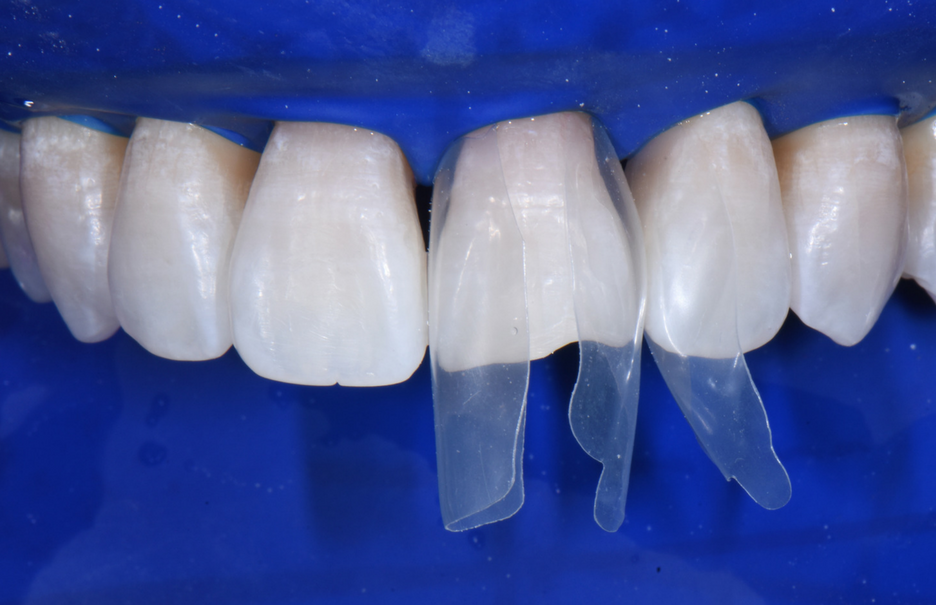
- The teeth were treated using the total-etch technique, then rinsed and dried.
- Next, a universal adhesive (Scotchbond Universal Adhesive [3M]) was applied.
- This was followed by heated flowable composite, which was chased with heated paste composite.
- 3M Filtek Supreme XTE Flowable paste composite (shade B1 Body) was then used and cured.
- After the matrix removal, excess buccal and lingual composite was quickly removed and shaped with large coarse discs (Sof-Lex [3M]). This was completed while avoiding marring the smooth Mylar finish left by the matrices.
- Initial polishing was carried out using Magic Mix (Bioclear) applied with a rubber cup, then rinsed.
- Finally, a Jazz Polisher (SS White Burs) achieved a stain-resistant high shine.
“Bioclear restored my confidence and made me happier”
Following the treatment, the patient commented that Bioclear had made him a much happier person.
“That is no hyperbole. I am naturally a very smiley person. Most of my life, I had been complimented on my beautiful smile. But a couple of years ago, I lost it.”
The patient first notices black triangles between tooth Nos. 23 and 24, at the age of 17. This was not a significant concern however, as it was not visible when smiling or speaking.
It was only when further posterior black triangles appeared and the central papilla disappeared, that the patient became extremely self-conscious. Yet multiple periodontist consults yielded no solution. Then he came across the Bioclear Method...
“I felt old and unattractive, losing confidence as my gumline receded. However, with Bioclear, I am back! I’m smiling, confident, and happier!”
Bioclear: the facts
The Bioclear Method offers many benefits to every level of clinician, who can learn and apply this approach to black triangle treatments very easily:
- Simple and predictable: the technique can be learned and applied by the average clinician.
- Smooth subgingival contours for tissue adaptation and health.
- Mylar finish for minimal calculus accumulation and easy removal, minimizing iatrogenic root contouring with repeated scaling.
- Protective coverage of root surfaces, reducing sensitivity.
- Broad incisal-gingival and buccal-lingual contacts, leading to orthodontic stability.
Our free Bioclear guide addresses the problem of unnecessarily aggressive restorative treatments, presenting a range of conservative solutions for treating black triangles, Class II restorations and peg laterals, as well as closing diastemas.
*This case was originally presented by Dr David Clark and Dr. Jihyon Kim in Minimally Invasive Dentistry.


